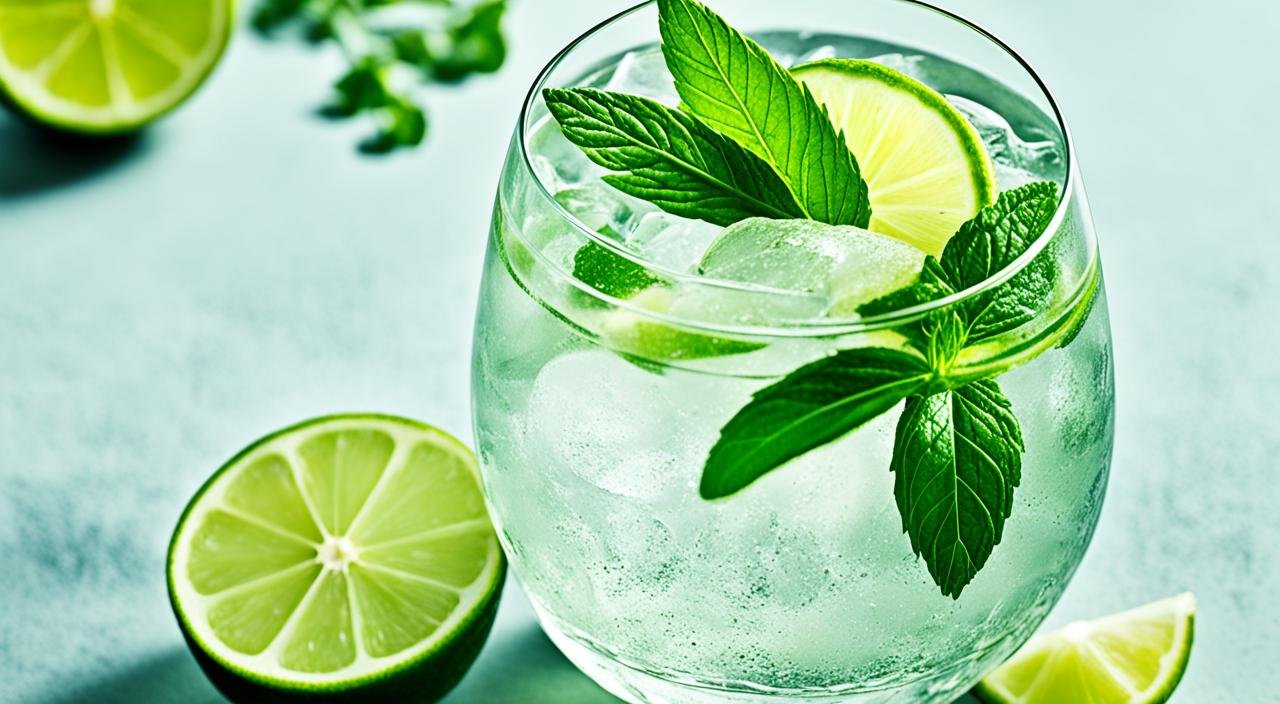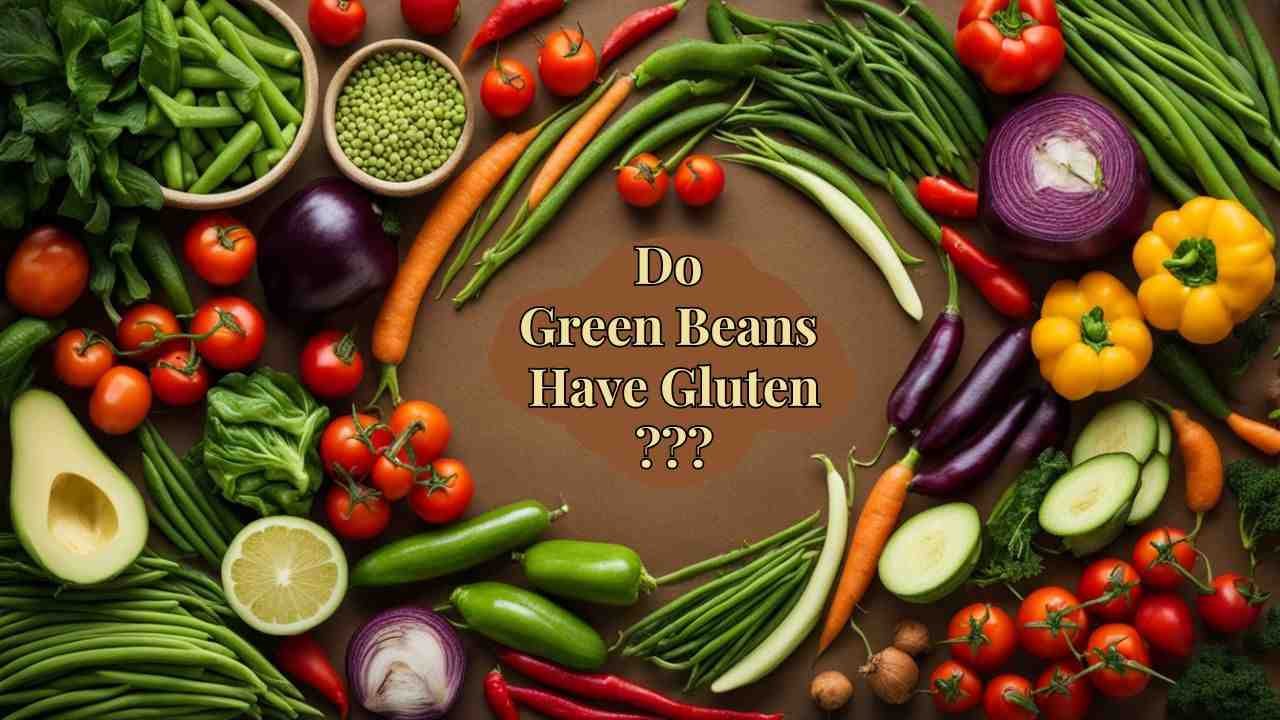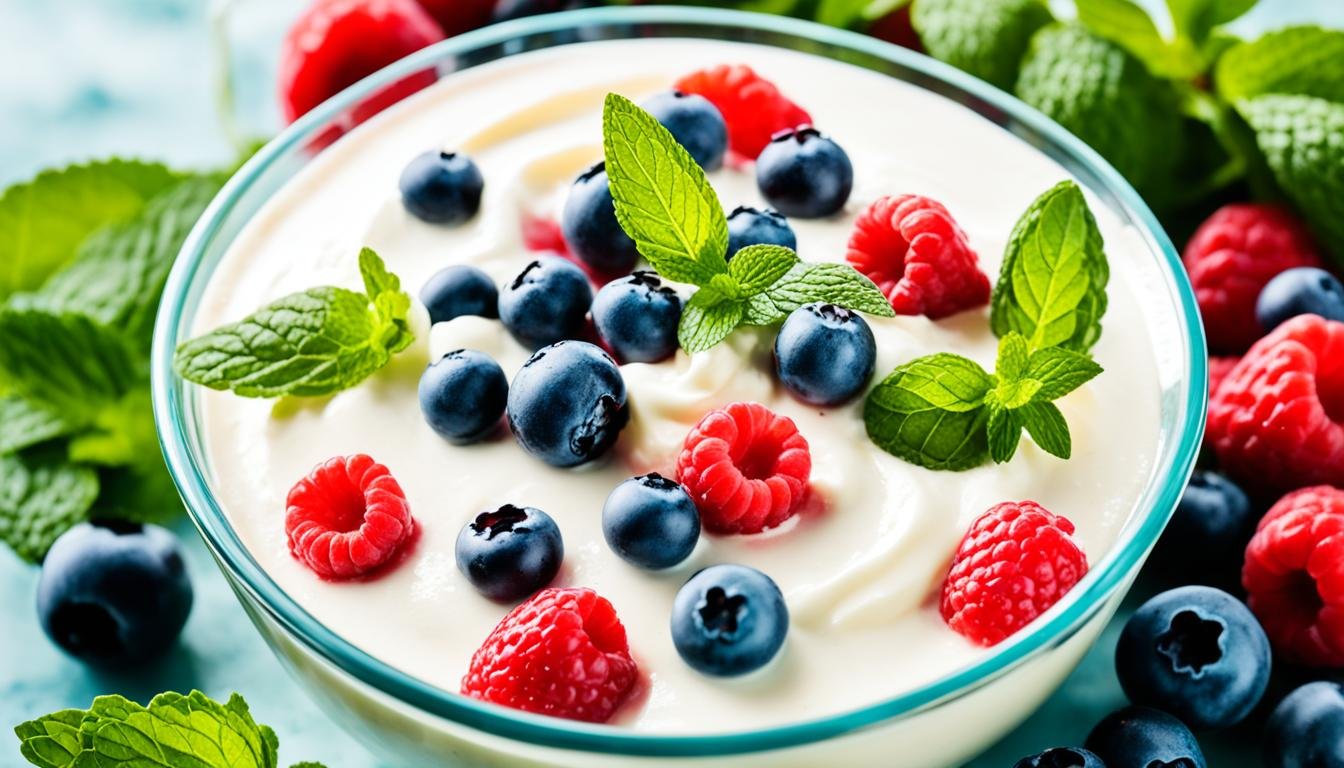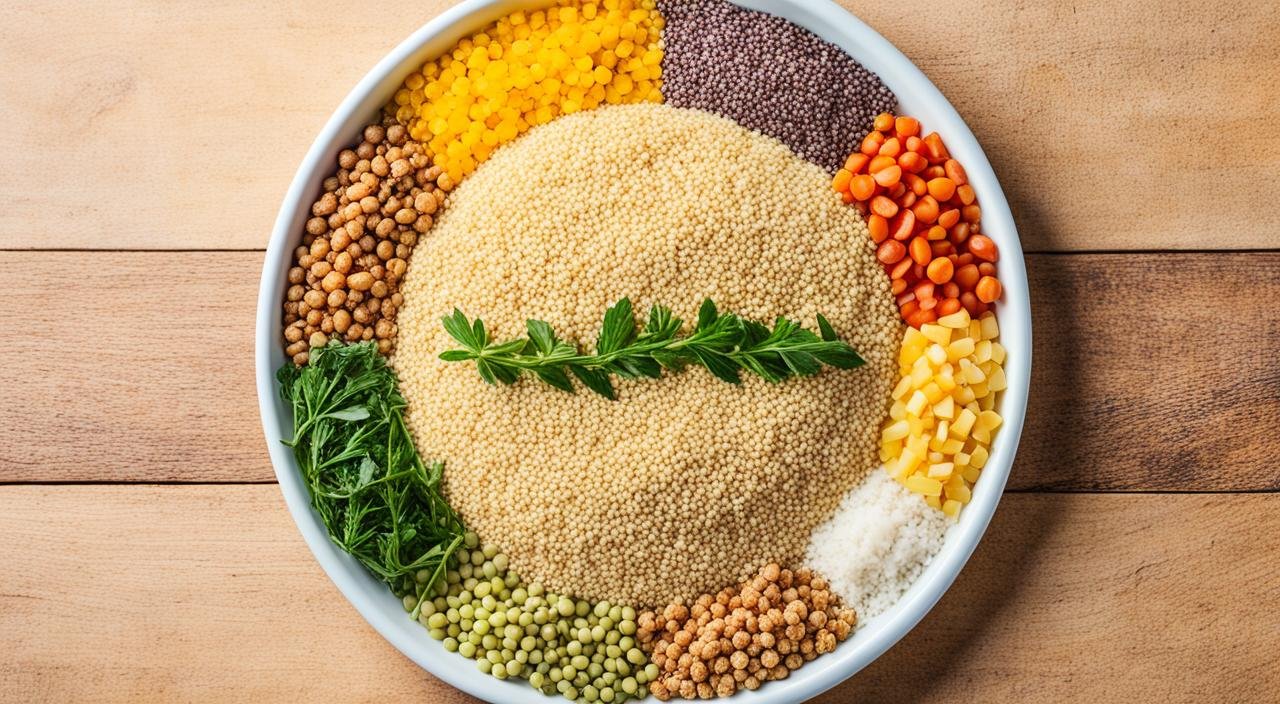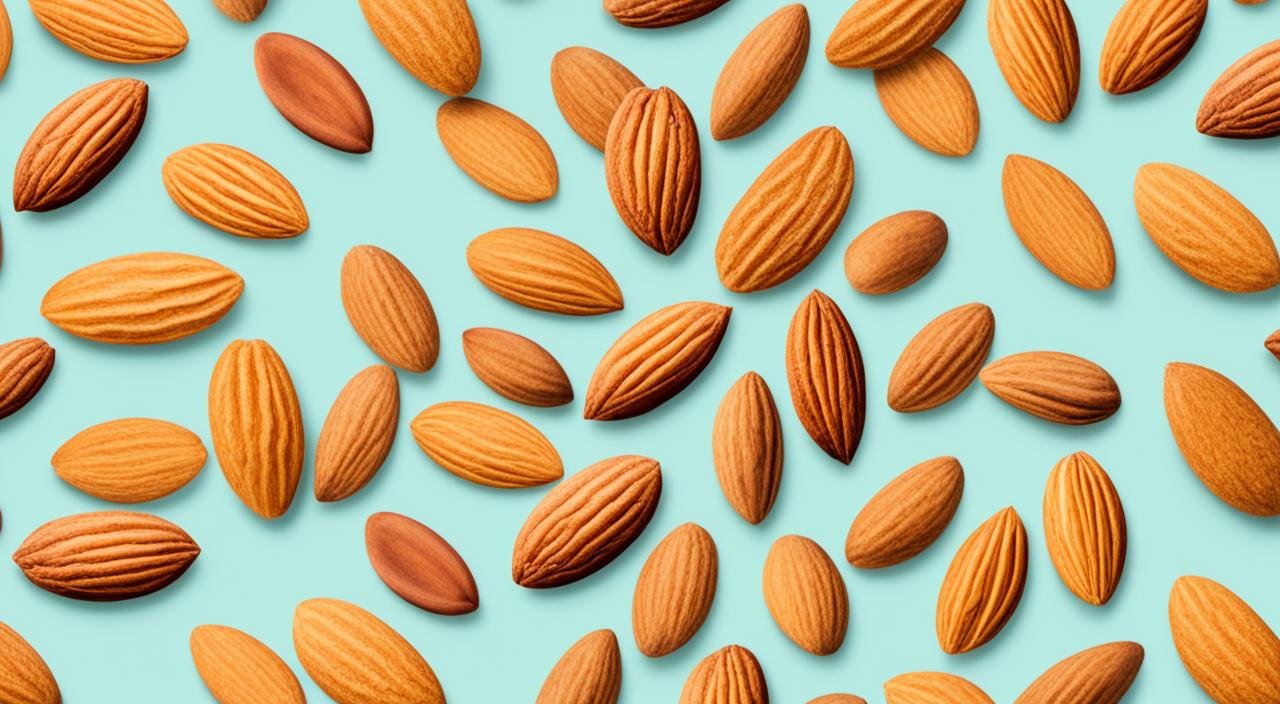Are you wondering if rice is safe for your gluten-free diet? Rice is a staple food in over 100 countries. It’s versatile and nutritious, and it’s naturally gluten-free. From white and brown to aromatic varieties like basmati and jasmine, all rice is free from gluten.
This means it’s safe for those with celiac disease or gluten intolerance. But with many rice options, it’s key to know about gluten-free rice. This ensures a healthy, balanced diet. Let’s dive into the world of gluten-free grains and see how rice can benefit your lifestyle.
Key Takeaways
- Rice is a naturally gluten-free grain, making it a safe and healthy choice for those with celiac disease or gluten sensitivity.
- All natural forms of rice, including white, brown, wild, basmati, and jasmine, are gluten-free.
- Whole grain rice varieties are packed with essential nutrients like fiber, B vitamins, and antioxidants.
- Certain rice-based products may contain gluten due to added ingredients, so it’s important to check labels.
- Rice is a versatile grain that can be a part of a well-rounded, gluten-free diet.
What is Gluten and Why Avoid It?
Gluten is a protein in grains like wheat, barley, rye, and triticale. For people with celiac disease, eating gluten starts an immune reaction that harms the small intestine. Those with gluten intolerance or non-celiac gluten sensitivity may feel bad in their stomach, even without the intestine damage of celiac disease.
Celiac Disease and Gluten Intolerance
About three million Americans have celiac disease. It makes the immune system attack the small intestine when gluten is eaten. This can cause not getting enough nutrients and other health problems if not treated. Gluten intolerance can cause stomach issues, but it’s not the same as celiac disease.
Non-Celiac Gluten Sensitivity
Non-celiac gluten sensitivity affects 1-6% of people. It can cause bloating, diarrhea, and stomach pain after eating gluten, even without celiac disease. Eating a gluten-free diet is key to handling these issues and avoiding more health problems.
Is Rice Gluten Free?
Many people ask if rice is safe for those who need to avoid gluten. The answer is yes, all types of rice like white, brown, wild, and aromatic ones are gluten-free. This makes rice a great choice for those with celiac disease or gluten intolerance.
Rice doesn’t have the protein gluten found in wheat, barley, and rye. So, those on a gluten-free diet can enjoy rice’s health benefits and tasty options. You can have everything from fluffy white rice to nutty brown rice and exotic aromatic types.
But, it’s key to remember that rice can still get contaminated with gluten during processing, storage, and cooking. So, it’s important to be careful to keep rice safe for those with gluten issues.
Key Takeaways:
- All natural forms of rice, including white, brown, wild, and aromatic varieties, are naturally gluten-free.
- Rice is a safe and suitable grain option for individuals following a gluten-free diet.
- Potential cross-contamination with gluten-containing grains during processing and storage requires attention to ensure rice remains gluten-free.
Knowing that rice is gluten-free and being careful helps people with gluten sensitivities. They can safely add rice to their meals. This way, they can enjoy the many tastes and health perks of rice.
Different Types of Gluten-Free Rice
Rice is a great choice for those who need gluten-free options. It comes in many types, from simple white rice to exotic basmati. Each type has its own taste and texture.
White Rice
White rice is a top pick for gluten-free diets. It’s made by removing the outer parts of the grain, leaving a soft, mild-tasting rice. You can use it in many dishes, like pilafs or stir-fries.
Brown Rice
Brown rice is a healthier choice. It keeps its bran and germ, which are full of fiber and vitamins. This rice tastes nutty and is great in rice bowls or as a side.
Wild Rice
Wild rice isn’t really rice but a gluten-free grain. It tastes earthy and is chewy. Add it to soups or casseroles for a nutritious meal.
Aromatic Varieties: Basmati and Jasmine
Basmati and jasmine rice are great for those who love flavor. Basmati has a nutty taste and long grains. Jasmine rice is sweet and soft. These rice make gluten-free meals more exciting.
There are many gluten-free rice options. This makes it easy to add rice to both savory and sweet dishes. You can make tasty, healthy meals for any diet.
Common Misconceptions About Rice and Gluten
People often get mixed up about rice and gluten. Some think all grains have gluten, but that’s not true. It’s like thinking all dogs bark – most do, but not all! Here are some wrong ideas people have:
- “Rice has a little gluten” – Nope, rice has zero gluten.
- “Brown rice has gluten, white doesn’t” – Wrong again! Both are gluten-free.
- “Rice noodles have gluten” – Not true. They’re made from rice, so no gluten.
A study found that 21% of people wrongly think rice has gluten. That’s like 1 in 5 people getting it wrong!
Gluten-Free Rice Dishes and Products
Rice is a versatile and naturally gluten-free grain. It can be enjoyed in many dishes and products. From plain cooked rice to tasty rice-based snacks, there are many options for those who follow a gluten-free diet.
Rice pilaf is a classic gluten-free dish. It mixes fragrant rice, veggies, and spices for a fulfilling meal. Rice-based cereals like Rice Krispies are also great for a gluten-free breakfast.
When looking at rice dishes and products, watch out for added ingredients with gluten. This includes sauces, seasonings, or flavorings. Always check labels and ask questions when eating out or shopping. This ensures the rice item is gluten-free.
| Gluten-Free Rice Dishes | Gluten-Free Rice Products |
|---|---|
|
|
Adding gluten-free rice dishes and products to your diet is a great way to enjoy tasty flavors and health benefits. It helps you stick to a gluten-free lifestyle. Try new recipes and snacks to find your favorites.
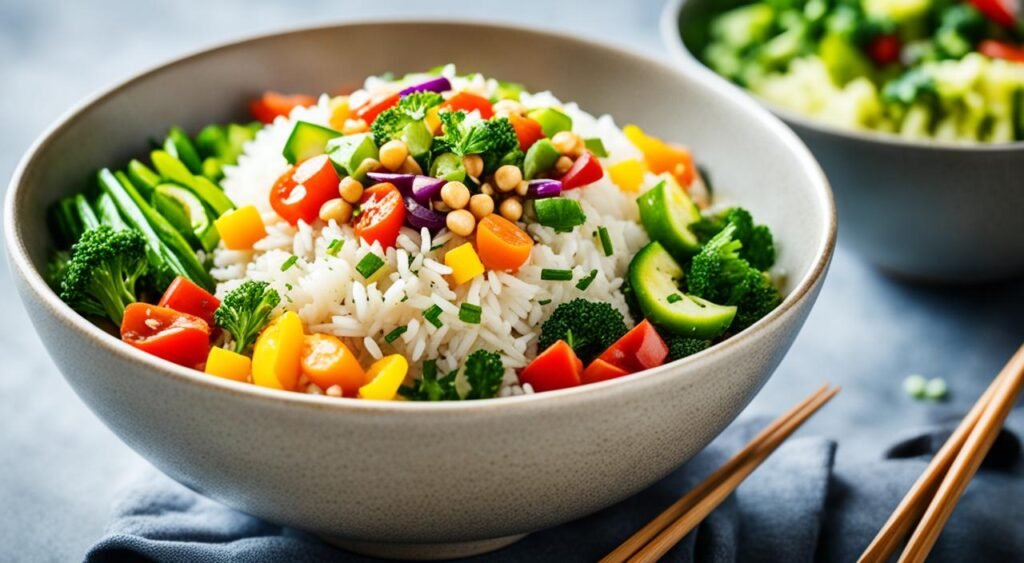
How to Cook Rice for Maximum Nutritional Benefits
Cooking rice right is like solving a puzzle – it’s fun and rewarding! Here are some tips:
- Don’t wash rice too much. It’s like washing away vitamins!
- Use less water. Too much is like drowning the nutrients.
- Try the “pasta method” – cook in lots of water, then drain. It lowers arsenic by 40%!
- Let it rest after cooking. It’s like giving rice a little nap to get perfect.
Fun fact: In Japan, people say “Okoge” for the crispy bottom layer of rice. It’s super tasty and has more nutrients!
Benefits of Gluten-Free Rice for a Healthy Diet
Rice is a great choice for a gluten-free diet. It includes white rice, brown rice, wild rice, and aromatic varieties like basmati and jasmine. These types are all gluten-free. They offer complex carbs, B vitamins, minerals, and more.
They are also lower in calories and higher in fiber than wheat products. This makes them a better choice for health.
Adding rice to meals and snacks can give you long-lasting energy. Rice is a naturally gluten-free grain. But, it might get contaminated with gluten during processing. Choosing certified gluten-free rice is safe for those with celiac disease or gluten issues.
- Rice is a healthy, gluten-free grain that can be a great addition to a balanced diet.
- Gluten-free rice options are lower in calories and higher in fiber compared to wheat-based products.
- Rice can be easily incorporated into a variety of gluten-free meals and snacks to provide sustained energy and support overall health.
Even though rice doesn’t have gluten, watch out for cross-contamination during processing. Choosing certified gluten-free rice is safe for those with celiac disease or gluten issues. This way, you can enjoy the benefits of rice nutrition safely.
Cross-Contamination and Certification
Rice is naturally gluten-free. But, it can get contaminated with gluten during processing, storage, or cooking. To keep rice safe for people with celiac disease or gluten issues, buy products labeled as gluten-free. Make sure they come from places that only make gluten-free products.
Avoiding Cross-Contamination
Cross-contamination can happen at many steps, from growing to packaging rice. Even eating out, make sure the rice is cooked in a clean pan. This helps avoid gluten contamination. By being careful with rice sources and handling, we can make sure it’s safe for those with dietary needs.
Gluten-Free Certification Labels
Look for gluten-free labels like those from the Gluten-Free Certification Organization (GFCO) or the Celiac Support Association (CSA). These labels mean the rice is safe because it was made in a place that only makes gluten-free products.
| Gluten Contamination in Gluten-Free Products | Percentage |
|---|---|
| Gluten-free packaged goods in the US | 68.8% |
| Gluten-free food in Turkey | 27.4% |
| Gluten-free pizza from certified restaurants | 13.75% |
| Gluten-free lunch meals in Brasilia, Brazil | 23.3% |
| Gluten-free grains, seeds, and flours in the US | 15% |
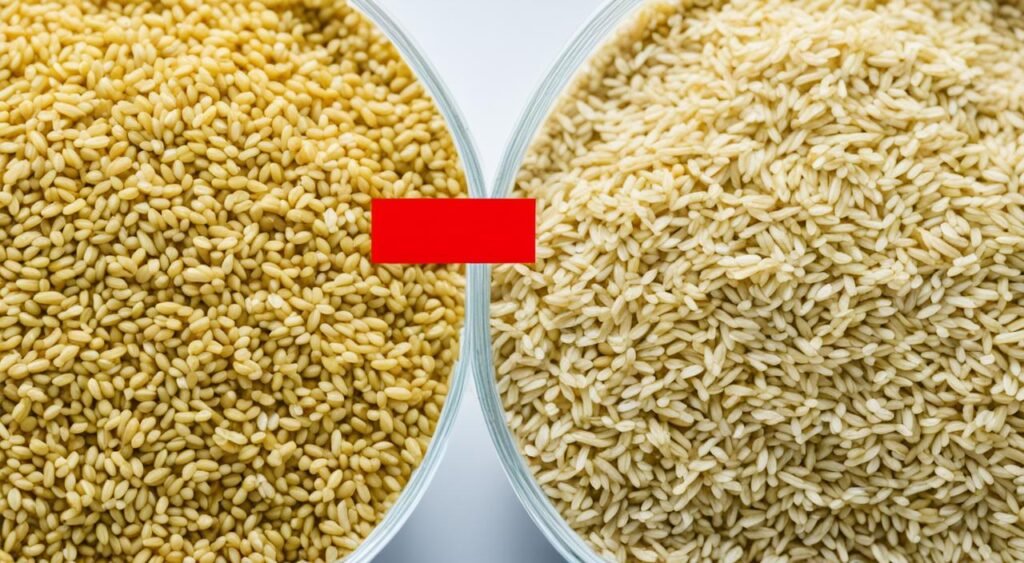
Knowing about cross-contamination and gluten-free labels helps us choose safe and tasty rice and other gluten-free foods. This way, we can enjoy our meals without worrying about our dietary needs.
Reading Food Labels: Spotting Hidden Gluten in Rice Products
Reading labels is like being a food detective. You need to look for clues! Here’s what to watch out for:
- “Modified food starch” – Could be from wheat!
- “Natural flavors” – Sometimes has gluten hiding.
- “Hydrolyzed protein” – Might come from wheat.
Remember: “Wheat-free” doesn’t always mean “gluten-free”. It’s like how “sugar-free” doesn’t always mean healthy!
A survey showed 41% of people find food labels confusing. You’re not alone if you feel the same!
Gluten-Free Grain Alternatives
Rice is naturally gluten-free. But, there are more grains that are also gluten-free and healthy. These grains add variety and important nutrients to a gluten-free diet.
Quinoa
Quinoa is a great choice for those avoiding gluten. It’s full of protein and fiber. Eating a cup of quinoa gives you 8 grams of protein and 5 grams of fiber. It also has magnesium, manganese, and phosphorus.
Millet
Millet is a small, gluten-free grain. It’s used in many dishes. It has B vitamins, phosphorus, magnesium, and protein. A cup of cooked millet has 6 grams of protein and 2 grams of fiber.
Amaranth
Amaranth is an ancient grain that’s gluten-free. It’s full of nutrients. A cup of cooked amaranth has 9 grams of protein, 5 grams of fiber, and lots of calcium, iron, and magnesium.
| Gluten-Free Grain | Protein (g/cup) | Fiber (g/cup) | Key Nutrients |
|---|---|---|---|
| Quinoa | 8 | 5 | Magnesium, Manganese, Phosphorus |
| Millet | 6 | 2 | B Vitamins, Phosphorus, Magnesium |
| Amaranth | 9 | 5 | Calcium, Iron, Magnesium |
These gluten-free grains, including rice, are good for your health. They add variety and important nutrients to a gluten-free diet.
Rice Alternatives for Those with Rice Allergies
Some folks can’t eat rice. It’s rare, but it happens. It’s like being allergic to puppies – not common, but tough for those who are! Here are some options:
- Quinoa: It’s like tiny beads and full of protein.
- Millet: Small and yellow, it’s like bird seed for humans! Form more information read this “Is Millet Gluten Free?”
- Buckwheat: Despite its name, it’s not wheat and has no gluten. For details you can read our article on “Is Buckwheat Gluten Free“
- Amaranth: Tiny and mighty, packed with iron.
Did you know? About 1 in 100,000 people have a rice allergy. That’s super rare!
Rice in Global Cuisines: Gluten-Free Options Around the World
Rice is like the world traveler of foods. It’s everywhere! Let’s look at some yummy rice dishes:
- Japan: Sushi rolls wrapped in seaweed. Yum!
- India: Biryani, a spicy rice dish fit for kings.
- Mexico: Arroz con leche, a sweet rice pudding.
- Italy: Risotto, creamy and rich (but check for gluten in the broth!).
Did you know? In China, people eat about 315 pounds of rice per person each year! That’s like eating your weight in rice!
Conclusion
Rice is a great choice for those on a gluten-free diet. It comes in many types like white rice, brown rice, wild rice, and basmati and jasmine. These options are perfect for people with celiac disease or gluten intolerance.
It’s important to avoid mixing gluten with rice to stay safe. Always pick gluten-free products to enjoy rice’s many benefits. Rice can help lower the risk of chronic diseases and is full of nutrients.
The gluten-free food market is getting bigger. We can expect more new and better gluten-free products, including rice. By choosing wisely, we can keep enjoying the tasty and healthy food of a gluten-free diet with rice.
I’m Dr. Shivani, a Kolkata-based nutritionist since 2015. After 10 years of igniting a love for healthy eating in young minds as a High School nutritionist teacher, I now help individuals unlock their full potential through personalized diet plans. My passion for writing and sharing nutrition knowledge (through blogs and observations) keeps my practice fresh and fuels my love for the field!


